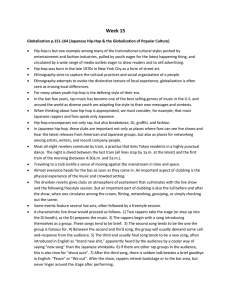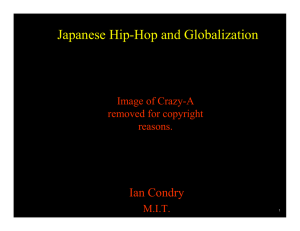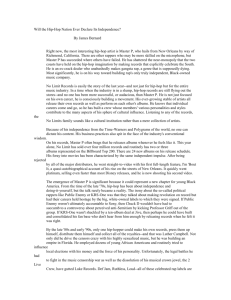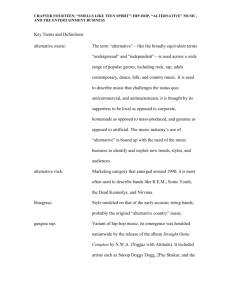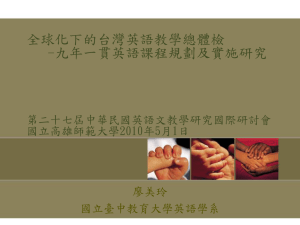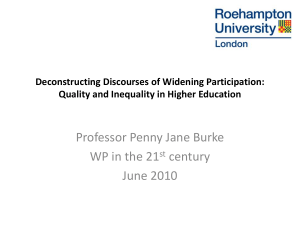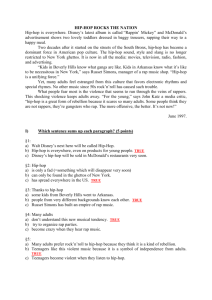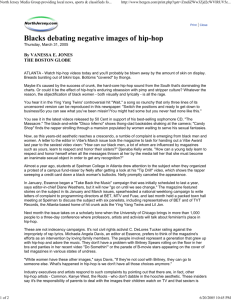Globalization Pg. (151-164)
advertisement
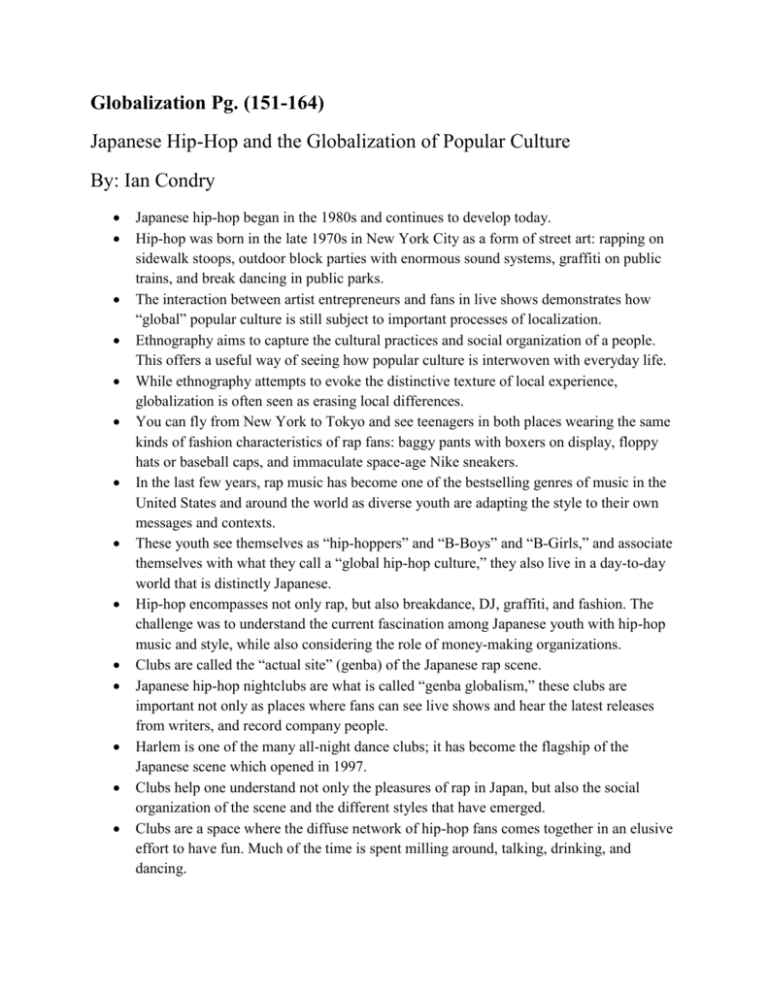
Globalization Pg. (151-164) Japanese Hip-Hop and the Globalization of Popular Culture By: Ian Condry Japanese hip-hop began in the 1980s and continues to develop today. Hip-hop was born in the late 1970s in New York City as a form of street art: rapping on sidewalk stoops, outdoor block parties with enormous sound systems, graffiti on public trains, and break dancing in public parks. The interaction between artist entrepreneurs and fans in live shows demonstrates how “global” popular culture is still subject to important processes of localization. Ethnography aims to capture the cultural practices and social organization of a people. This offers a useful way of seeing how popular culture is interwoven with everyday life. While ethnography attempts to evoke the distinctive texture of local experience, globalization is often seen as erasing local differences. You can fly from New York to Tokyo and see teenagers in both places wearing the same kinds of fashion characteristics of rap fans: baggy pants with boxers on display, floppy hats or baseball caps, and immaculate space-age Nike sneakers. In the last few years, rap music has become one of the bestselling genres of music in the United States and around the world as diverse youth are adapting the style to their own messages and contexts. These youth see themselves as “hip-hoppers” and “B-Boys” and “B-Girls,” and associate themselves with what they call a “global hip-hop culture,” they also live in a day-to-day world that is distinctly Japanese. Hip-hop encompasses not only rap, but also breakdance, DJ, graffiti, and fashion. The challenge was to understand the current fascination among Japanese youth with hip-hop music and style, while also considering the role of money-making organizations. Clubs are called the “actual site” (genba) of the Japanese rap scene. Japanese hip-hop nightclubs are what is called “genba globalism,” these clubs are important not only as places where fans can see live shows and hear the latest releases from writers, and record company people. Harlem is one of the many all-night dance clubs; it has become the flagship of the Japanese scene which opened in 1997. Clubs help one understand not only the pleasures of rap in Japan, but also the social organization of the scene and the different styles that have emerged. Clubs are a space where the diffuse network of hip-hop fans comes together in an elusive effort to have fun. Much of the time is spent milling around, talking, drinking, and dancing. There is a back-and-forth aspect of reworked in a context where the audience is knowledgeable, discriminating, and at times participates in the sow itself. Hip-hop collectives such as Kitchens, Little Bird Nation, Funky Grammar Unit, and Rock Steady Crew Japan are called “families” (famirii, in Japanese). Such families define the social organization of the “scene.” The live show is at most an hour long, at times closer to twenty minutes, and yet there is nowhere for the clubbers to go until the trains start running again around 5a.m. One gets wrapped up in a surge of energy that is palpable yet intangible which it is this emotional experience that in many ways counteracts any fears that it is all “merely imitation,” which is the most common criticism of the music. While a club may strive to be a fantastic microcosm, it is still embedded in Japan’s political-economic structures, characteristic social relations, and the contemporary range of cultural forms. It is not by chance that clubs tend to attract people of specific class, age, sexuality, and to some extent locale. Clubbing offers freedom and constraints, this tension is the key to understanding how clubs socialize the club-goers by structuring pleasure in characteristics ways. At the dawn of the twenty-first century, entertainment industries are reaching wider markets and larger audiences. An important feature of pop culture commodities is that they tend to be expensive to produce initially, but then relatively cheap to reproduce and distribute. The more one can sell, the higher the return, and this helps explain the eagerness of entertainment businesses to develop new markets around the world. The conventional understanding of globalization is that it is producing a homogenization of cultural forms. The term “cultural imperialism” captures this idea, that political and economic power is being used “to exalt and spread the values and habits of a foreign culture at the expense of the native culture.” A social process in which the constraints of geography on social and cultural arrangements recede, and in which people become increasingly aware that they are receding. A key aspect of this definition is not only that the world is increasingly becoming one place, but that people are becoming increasingly aware of that. The globalization processes go back five hundred years, and that the relative importance of economic, political, and cultural exchanges has varied over that time. Global pop culture forms are leading not to some simple homogenization, but rather adding to a complex mix that in many ways an only be studied ethnographically through extended research in local sites. “Genba globalism” aims to show how artists, fans producers, and media people are actively consuming and creating these new forms. Anthropologists offer to the advancement of human knowledge is a clear sense of the ways people interact in specific places. The globalization of popular culture needs to be understood as two related yet opposing trends of greater massification and deeper compartmentalization. The distinction between “scene” and “market” highlights what is at stake when we try to analyze the cultural and capitalist transformations associated with globalization. Music magazines, TV video shows, and record stores promote similar artists whether in Japan or the United States.
